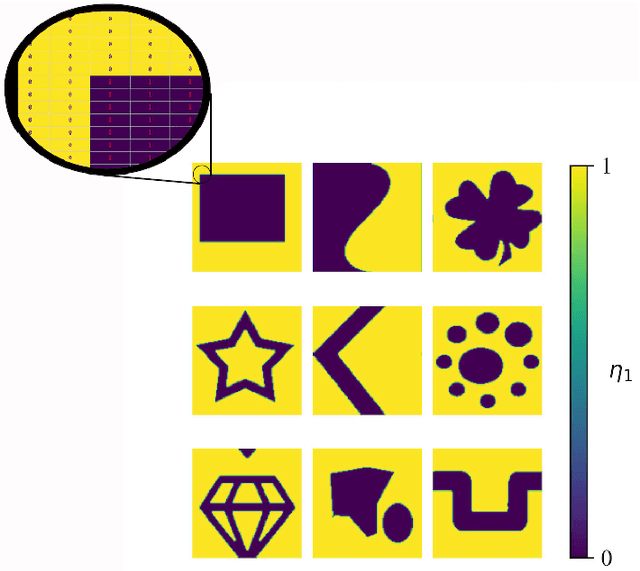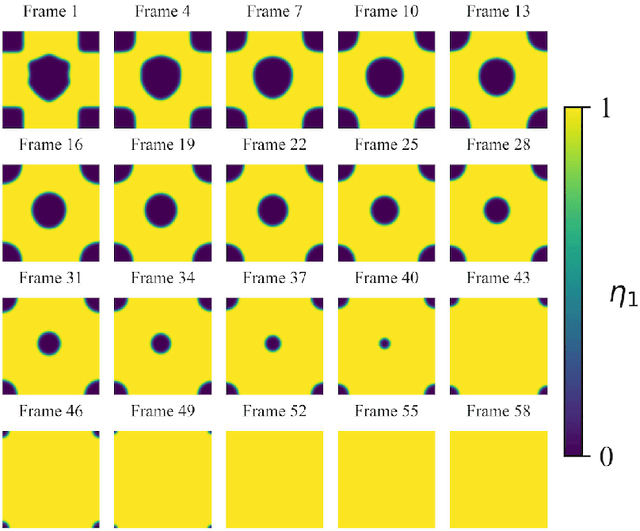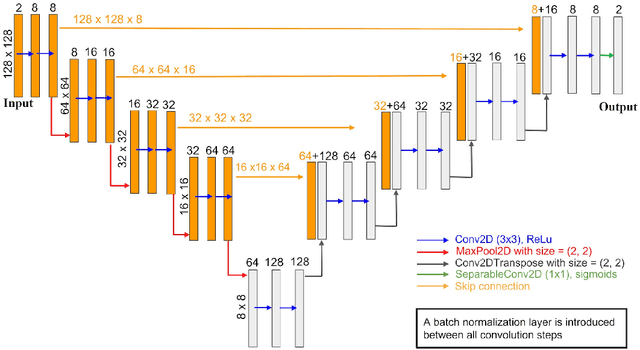Iman Peivaste
Teaching Artificial Intelligence to Perform Rapid, Resolution-Invariant Grain Growth Modeling via Fourier Neural Operator
Mar 18, 2025Abstract:Microstructural evolution, particularly grain growth, plays a critical role in shaping the physical, optical, and electronic properties of materials. Traditional phase-field modeling accurately simulates these phenomena but is computationally intensive, especially for large systems and fine spatial resolutions. While machine learning approaches have been employed to accelerate simulations, they often struggle with resolution dependence and generalization across different grain scales. This study introduces a novel approach utilizing Fourier Neural Operator (FNO) to achieve resolution-invariant modeling of microstructure evolution in multi-grain systems. FNO operates in the Fourier space and can inherently handle varying resolutions by learning mappings between function spaces. By integrating FNO with the phase field method, we developed a surrogate model that significantly reduces computational costs while maintaining high accuracy across different spatial scales. We generated a comprehensive dataset from phase-field simulations using the Fan Chen model, capturing grain evolution over time. Data preparation involved creating input-output pairs with a time shift, allowing the model to predict future microstructures based on current and past states. The FNO-based neural network was trained using sequences of microstructures and demonstrated remarkable accuracy in predicting long-term evolution, even for unseen configurations and higher-resolution grids not encountered during training.
Accelerating phase-field-based simulation via machine learning
May 04, 2022



Abstract:Phase-field-based models have become common in material science, mechanics, physics, biology, chemistry, and engineering for the simulation of microstructure evolution. Yet, they suffer from the drawback of being computationally very costly when applied to large, complex systems. To reduce such computational costs, a Unet-based artificial neural network is developed as a surrogate model in the current work. Training input for this network is obtained from the results of the numerical solution of initial-boundary-value problems (IBVPs) based on the Fan-Chen model for grain microstructure evolution. In particular, about 250 different simulations with varying initial order parameters are carried out and 200 frames of the time evolution of the phase fields are stored for each simulation. The network is trained with 90% of this data, taking the $i$-th frame of a simulation, i.e. order parameter field, as input, and producing the $(i+1)$-th frame as the output. Evaluation of the network is carried out with a test dataset consisting of 2200 microstructures based on different configurations than originally used for training. The trained network is applied recursively on initial order parameters to calculate the time evolution of the phase fields. The results are compared to the ones obtained from the conventional numerical solution in terms of the errors in order parameters and the system's free energy. The resulting order parameter error averaged over all points and all simulation cases is 0.005 and the relative error in the total free energy in all simulation boxes does not exceed 1%.
 Add to Chrome
Add to Chrome Add to Firefox
Add to Firefox Add to Edge
Add to Edge